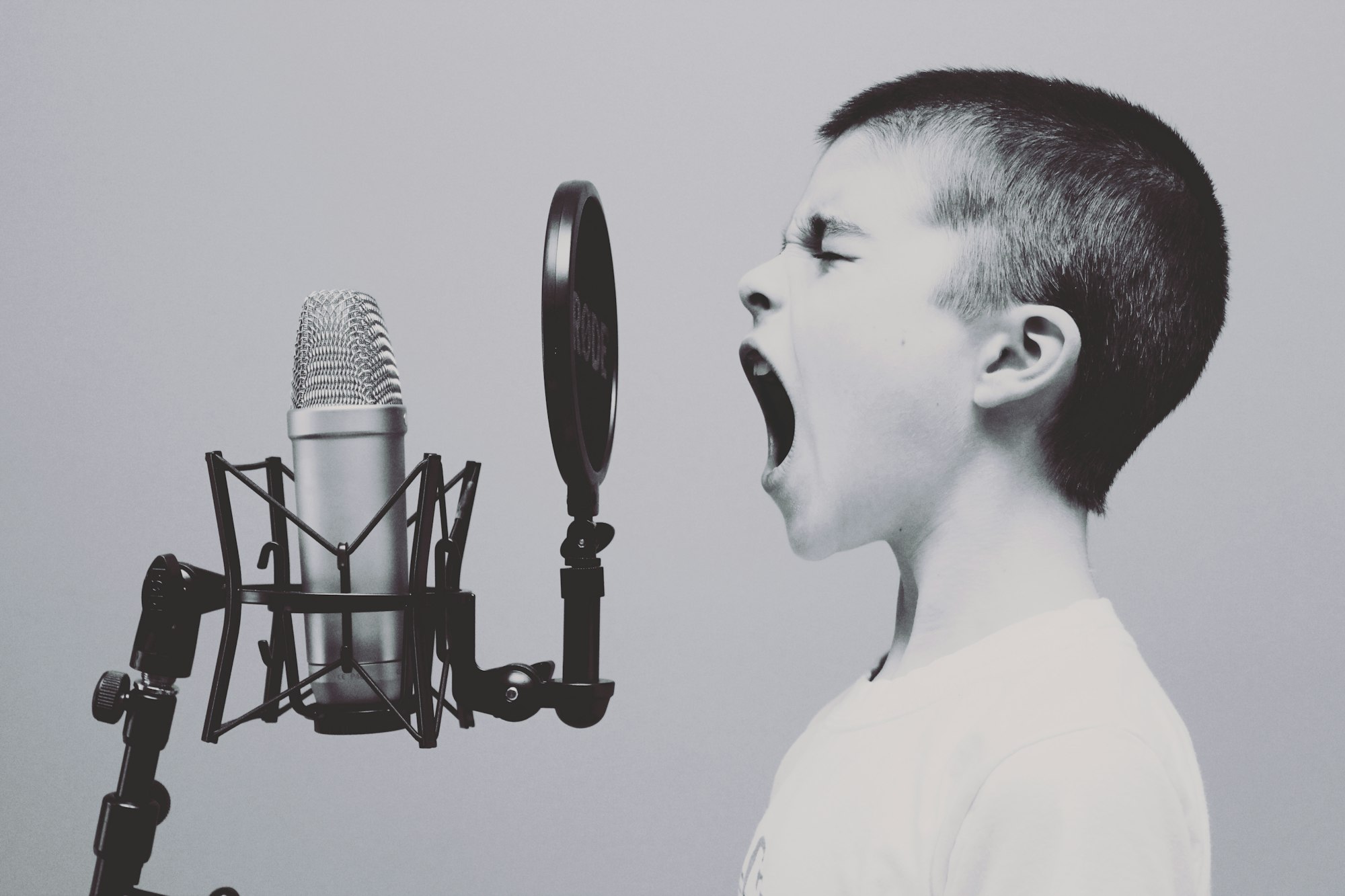Building a community that supports your brand is really important if you want to grow fast. Today, you’ll learn the secret to building a passionate, loyal, and incredibly valuable brand community.
"I think there’s a misconception that community is very fluffy and sometimes, yes, it has to be because you’re catering to the emotions of your community or users. But just like any other piece of the business, community has to be measurable. Otherwise, you can’t make it better, whatever that means to you."
-Danielle Letayf, Badassery
Below, we’ll cover the basics of brand communities, why they’re so important, and reveal which brands have the most passionate fans as measured by their willingness to get a logo tattooed on their arm. Very scientific, I know.
Plus, we’ve got special guest Danielle Letayf from Badassery to share how to create a community that provides a sense of real connection and value for its members.
Stay tuned... but first... we asked 1,000+ people which brand they'd be the most likely to get tattooed on their arm. Curious to see the data? It's all yours!
What’s a Brand Community?
A brand community at its simplest level is a group of people who come together because of their interest or passion for a specific brand.
Unlike social media communities, which are managed and operated by the companies that own the brand’s trademark, anyone can join a brand community simply by caring about a brand.
Brand communities can be influenced by the brand itself, but they are completely organic and can sometimes have agendas, desires, and feelings that are different from the brand’s company. This dynamic is key to understanding their importance.
Why are Brand Communities So Important?
There is a lot of data that suggests a brand’s community plays a big factor in its growth. Benefits include:
- Market Research: 86% of Fortune 500 companies report communities provide insight into customer needs
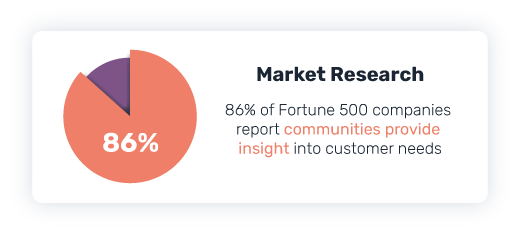
- Product Development: 66% of companies say they turn to brand communities for product development
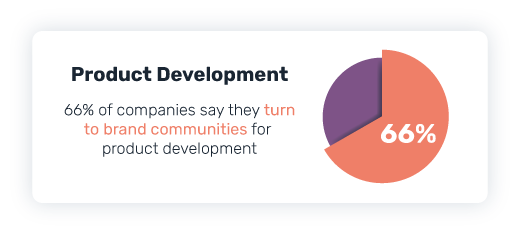
- Decision-Making: 64% of companies state the brand community has improved their decision-making
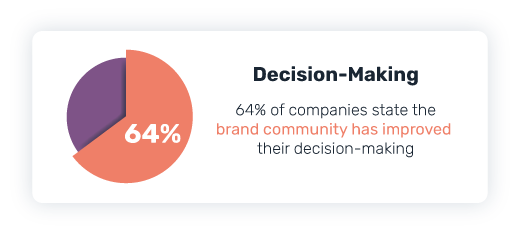
- Customer Loyalty: 53% of Americans who are part of a social brand community are more loyal to that brand
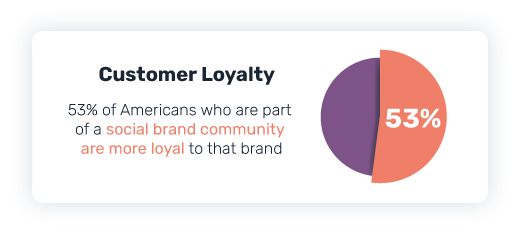
But the biggest benefit of growing a community is that every member has the ability to become an advocate for the brand, which further drives awareness, consideration, and preference for the brand among other people. How do you get a brand advocate?
What Brands Have The Most Passionate Communities?
The secret to a strong brand community is passion. The more passionate a community member, the more likely they are to advocate for and stay loyal to the brand.
And the ultimate measure of passion? How about literally getting branded?
We asked a thousand people on the Internet, “If you had to get the logo from a famous brand tattooed on your arm, which brand would you choose?”
Here’s what they said:
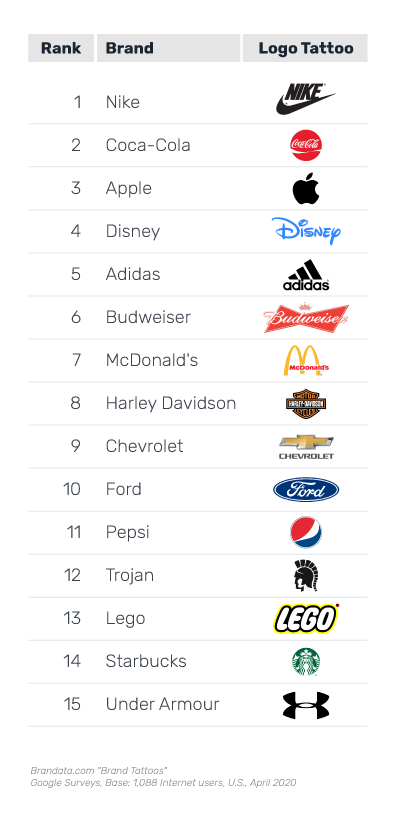
Honorable mentions included Under Armour, Starbucks, Lego, Trojan, Pepsi, Ford, Chevrolet, Harley Davidson, McDonald’s, Budweiser, Adidas, and Disney.
With 13 votes, Apple ranked #3. At 30 votes, Coca-Cola came in second place.
And in first place, with a whopping 125/1,089 responses, Nike won our highly scientific study of passion within brand communities.
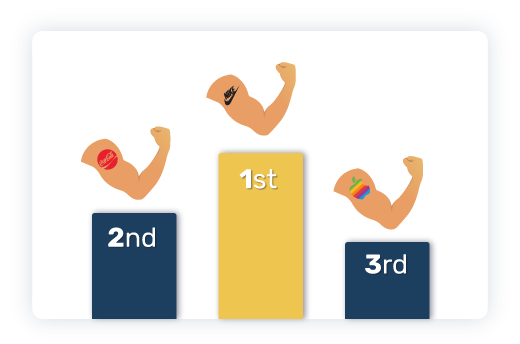
How Do You Build a Brand Community With Real Connection?
Ok, so how exactly do you inspire people to want to join your community and then become passionate about it?
For that, we reached out to Danielle Letayf, founder of Badassery, a professional community for rising leaders. I had a chance to ask Danielle about her thoughts on building brand communities with real connection. Check it out:
Watch the interview to see Danielle answer these questions:
- What advantages do brands with strong communities have over brands that don’t?
- Can you quantify or measure the strength of a brand community and if so, what metrics should you use?
- What are some tips for building communities with real connection?
Brand Communities, in Closing
If you liked this episode then take a few seconds to follow or subscribe to this channel. Or scroll up to download the full results from our brand tattoo study.
Ok, it’s your turn…
What role does your community have in your brand’s growth? What benefits do you get from your community? And what do you do to engage with and grow your brand’s community?
Let me know by leaving a comment real quick before you leave.
Transcript from our interview with Danielle Letayf:
So how do you quantify the strength of a brand community and if so, what metrics should you be using? Yeah, I love this question because I think there's a misconception that community is very fluffy, and I think sometimes, yes it has to be because you're catering to the emotions of your community or your users or whatever it is. But just like any piece of business, community has to be measurable, otherwise you can't really get better, right? Whatever that means to you. So one of my favorite, and for me, as somebody who runs communities as my job, my favorite metric would be the referral rate. So this could be, for me, having somebody obviously refer a friend into the community and sign up as a member. For brands, it might be if you have a friend sign up with your referral code for a glossier product, whatever it is. And I think it's really important because it means that at that point that you as the company or as the brand have gained the trust of your consumer, and trust is very very difficult to come by, right? We have so many products coming at us, but the companies that will win are the ones that tap into the emotional connection that they have with their communities. So to gain the trust and to have somebody vouch for you as a brand is really important. So for me, number one is referral rate. Basically it tells me how good of a job I'm doing with my own community for them to promote my service. Another one that's important for me is also turn over retention rate. It makes much more sense for people who are running straight up communities versus thinking of community as social media or experiences. But for me, I always look at what my turn over rate is for my membership based community, and at what point did they opt out, right? So my whole goal is to make an experience that's incredible for each individual member, so looking at the number of people who fall out over a certain period of time, and at what point, and looking at those trends and seeing how we can optimize the experience. All right, last question. What are your best tips for building communities with real connection? Yeah, good question. I think it's so relevant too, as I don't know if you know but a lot of communities are popping up, especially now, and people are super hungry for connection during quarantining and of course during the COVID crisis. But one of my favorite quotes that I read from the founders of People and Company is that "communities often feel like magic, "but they absolutely do not come together by magic", and it's the most accurate thing I've ever read because community building takes so much work. Those engaged communities that exist, we're like, "Wow, they must have good products or whatever it is." It takes so much behind the scenes work to connect and to engage, and so my first tip is to know your people very very very well, and to look at who is in the community, both in a micro and macro level. So my opinion is that a lot of communities are making the mistake of looking at their entire membership base as kind of like one blob. I think it's so important to look at each person as an individual, and of course as one team, and look at the micro communities that exist within it too, to see how you can cater your services, how you can talk to each group, so it's really important. I actually personally have a database for each one of my members and I use that to navigate my connections. The second thing I would say is to build with your community and not for your community. So any time you're approaching something from the top down, it just means that there's a goal and it's typically a sales goal, right? So our role as leaders of community is to listen in to what our communities are already talking about, take that and then create the experience with them, never really top down. Of course sometimes that happens, but mostly with them. And then the third thing is that again, another role for a community leader is to just create more leaders. So that could mean assigning roles to different members who are naturally popping up as leaders in the community. It could mean creating ambassador programs, but giving the members something to do actually makes them feel like they're more a part of it, like they're seen, and ultimately creates a more engaged community base. Those are all super valuable tips. Really appreciate your time, thank you so much. Yeah, thanks so much Josh.

